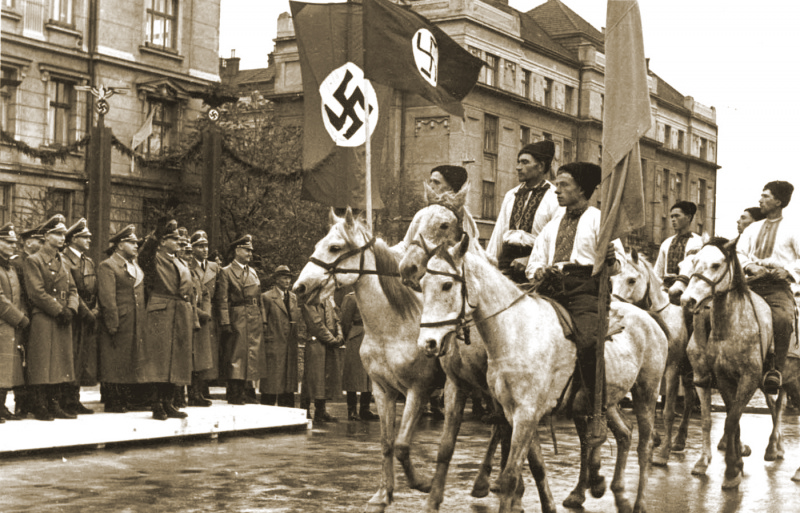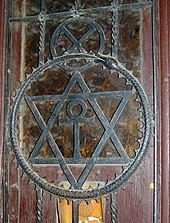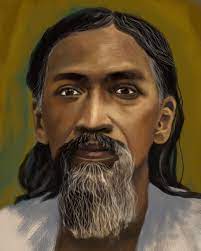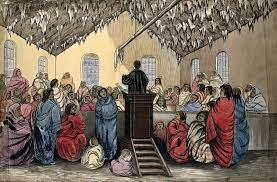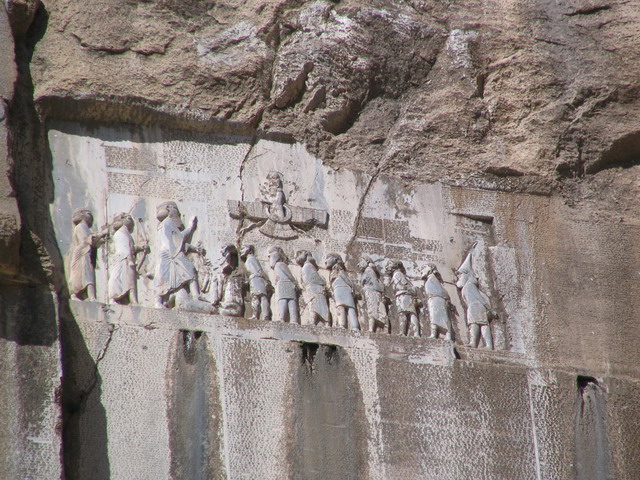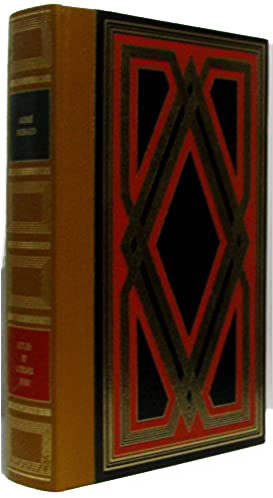Chapter XI: Incurable decadence
No longer gigantic, like unto the Spirits, proud and free,
But servile, crawling, crafty, cowardly, envious,
Frozen flesh where nothing stirs or trembles any more,
Man will swarm anew under the skies.
—Leconte de Lisle (Qaïn; Poèmes Barbares).An impure air embraces the globe stripped
Of the woods that sheltered it in their sublime mantle;
The mountains, under vile feet, have lowered their summits;
The mysterious heart of the ocean is defiled.
—Leconte de Lisle (L’Anathème; Poèmes Barbares).
The perpetuation of Hitlerism as an expression of the eternal, more than human, tradition—and in particular of the Germanic form of this tradition—adapted to our time, doesn’t, however, mean the resurgence, in the more or less near future, of the new civilisation that was taking shape within the framework of the Third Reich.
As I have tried to show in another study,[1] all religious or political leaders (or both) whose action is directed against decadence, against the false values inseparable from the childish overestimation of ‘man’, fail in the long run, even when they appear to succeed—for decadence is the true direction of Time against which no one should expect, during a cycle, to remain victorious forever.
Despite this, some manage to establish a civilisation that is linked, in its basic principles, to some particular form of Tradition. They do this at the cost of certain necessary compromises on the exoteric level, which ensure the permanent enthusiasm of the crowd to them, the consequence of spectacular success.
Legislation based on their teaching still governs States, if not continents, centuries after their death. And although their work is crumbling and disintegrating all the more rapidly because they came later in the succession of promoters of ‘redress’; although, if they could ‘come back’ they would hardly recognise their creation in what has become over time the civilisations they founded, they have left something visible, something pitifully sclerotic—sometimes even degenerate—but at least historically significant.
But there are others whose creation against the guiding trends of their time ends with them. This happens when inspired leaders refuse those compromises which, more and more as the ages pass, are the indispensable conditions of success in this world. But it also happens whenever such leaders live and act in a ‘doomed’ age, i.e., when no ‘rectification’ of any scope (and duration) is possible any longer—no matter how worthy and skilful the initiator may be.
Only Kalki, the last of the avatars of Vishnu, or by whatever name men who are attached to the various expressions of the one Tradition like to call him, is assured of success in a battle against the tide of Time. And this success will then be total, consisting of nothing less than that absolute reversal of values that characterises the end of one world and the birth of an unknown and long unthinkable world. Accompanied by unprecedented destruction, it will signify the end of the present cycle: the end of the Dark Age, from which nothing good could come; the end of this cursed humanity, and the Appearance of conditions of life and means of expression similar to those of every Golden Age.
_________
[1] In The Lightning and the Sun, a book completed in early 1956 and published in Calcutta in 1958.
